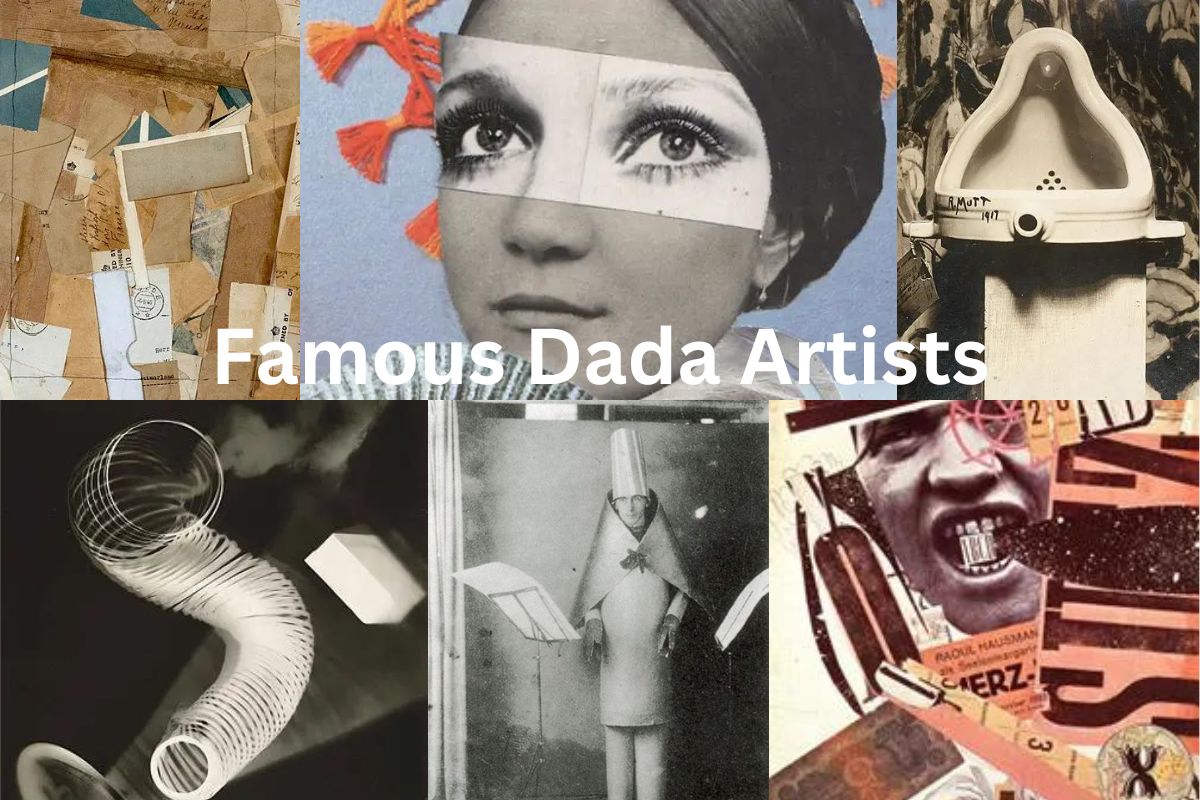Dada, also known as Dadaism, was a European avant-garde art movement that began in Zürich, Switzerland, at the Cabaret Voltaire (c. 1916).
Dada originated in New York about 1915, and it thrived in Paris around 1920. Dadaism was active until the mid-1920s.
The Dada movement, which arose in response to World War I, was comprised of artists who rejected the logic, reason, and aestheticism of contemporary capitalist society, instead expressing folly, irrationality, and anti-bourgeois protest in their works.
The movement’s art included collage, sound poetry, cut-up text, and sculpture, as well as visual, literary, and auditory media.
Dadaist artists emphasized their dissatisfaction with violence, war, and nationalism, and they maintained political relations with extreme left-wing and far-left parties.
Famous Dada Artists
1. Marcel Duchamp
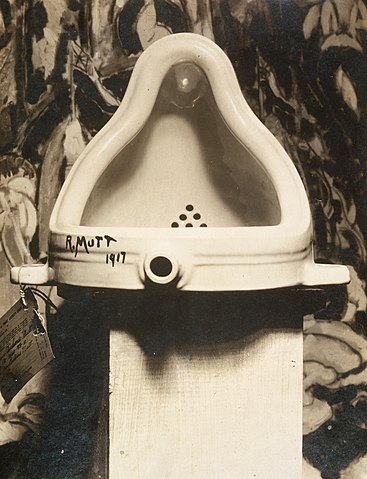
Marcel Duchamp (1887-1968) was a French-American artist widely regarded as a pivotal figure in modern and contemporary art. The work of Marcel Duchamp influenced the development of various art styles, including Dada, Surrealism, and conceptual art.
Duchamp was noted for his conceptual approach to art, which questioned established notions of what art could be.
He is most known for his readymades, which were everyday objects that he selected and classified as works of art simply by displaying them in a gallery or exhibition venue.
“Fountain” (1917), a porcelain urinal that Duchamp submitted to an art exhibition under a pseudonym, is one of his most renowned readymades.
Paintings, drawings, and sculptures by Marcel Duchamp also explored themes of identity, gender, and sexuality. “Nude Descending a Staircase, No. 2” (1912), his most renowned picture, was first contentious but ultimately became one of the most iconic works of contemporary art.
The work of numerous artists who followed Duchamp, particularly Pop artists of the 1960s and 1970s and Conceptual artists of the 1980s and beyond, demonstrates his effect on contemporary art.
2. Tristan Tzara
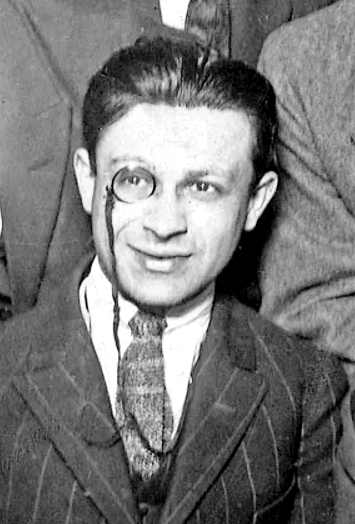
Tristan Tzara (1896-1963) was a Romanian poet, writer, and one of the Dada movement’s founders. Tzara’s writing was noted for being provocative and incomprehensible, challenging conventional concepts of language and meaning.
He was a key figure in the formation of the Dada movement, which began in Zurich during World War I and sought to challenge logic and aesthetic traditions of the time.
Tzara had an important role in the Dada movement in both Zurich and Paris, where he later resided and worked. He was an active writer and editor, founding and contributing to various Dada publications, notably the magazine “Dada” and the book “Seven Dada Manifestos.”
Tzara’s writing was frequently distinguished by its use of chance and unpredictability, which he considered as a means of bridging the gap between art and everyday life. He was particularly fascinated by the potential of sound and performance, and he composed several pieces intended to be read aloud or performed, such as his “Approximate Man” manifesto.
Tzara’s influence on contemporary art may be seen in the work of numerous artists who came after him, such as Fluxus artists from the 1960s and 1970s and performance artists from the 1980s and beyond.
His impact also continues on in modern art and literature, where there is a continuing interest in the use of chance, unpredictability, and unusual approaches to language.
3. Jean Arp
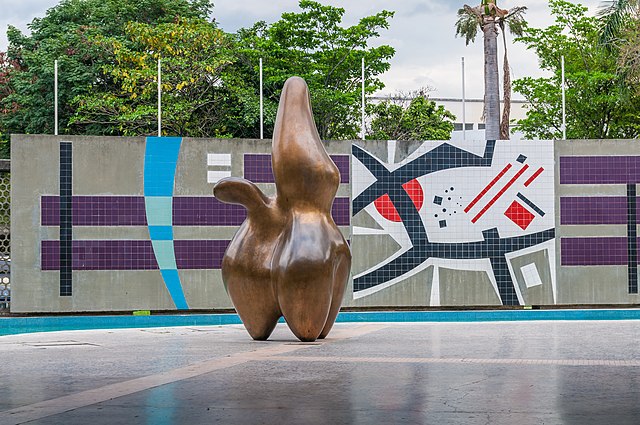
Jean Arp, often known as Hans Arp, was a French-German artist best recognized for his contributions to the Dada and Surrealist movements. Arp was born in Strasbourg, which was part of Germany at the time, and later relocated to Switzerland, where he became involved with the Dada movement.
Arp’s work was distinguished by the use of organic forms and abstract shapes, which he considered as a means of expressing the natural world’s underlying rhythms and harmonies.
He was a pioneer of the “chance operations” approach, in which he would drop pieces of paper onto a surface and arrange them randomly, believing that this formed a more natural and harmonious composition.
Arp’s work included sculpture, painting, and printmaking, and he was best renowned for his biomorphic sculptures, which frequently used natural materials like wood, stone, and bronze.
“Bird in Space” (1923), a bronze sculpture that emphasizes the dynamic form of a bird in flight, is one of his most recognized works.
Arp’s work influenced the development of various art movements, including Abstract Expressionism, Surrealism, and Biomorphism. In the decades since his death, his approach to abstraction and organic form has continued to impact artists.
4. Salvador Dalí
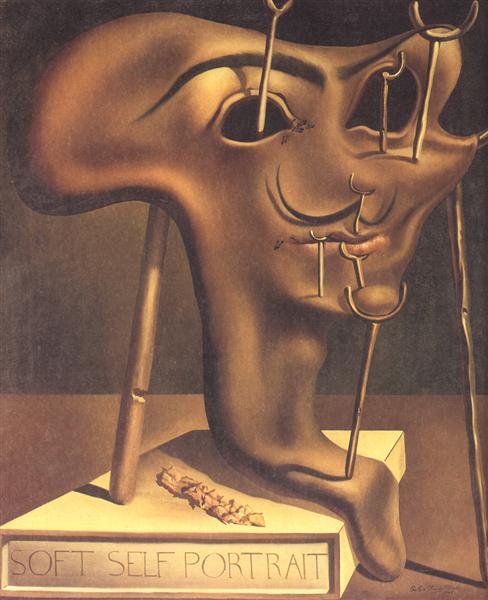
Salvador Dalí (1904-1989) was a Spanish painter, sculptor, and one of the twentieth century’s most prominent artists. Dalí was a key member in the Surrealist movement, which attempted to investigate the illogical and subliminal aspects of human thought.
Dalí’s art is distinguished by its extremely detailed and frequently surreal imagery, which frequently depicts melting things, twisted individuals, and dreamlike landscapes. He was also recognized for his precise technique and use of vibrant, sometimes stunning hues.
“The Persistence of Memory” (1931), a landscape of melting watches, and “The Hallucinogenic Toreador” (1970), a large-scale painting with a lot of surreal and hallucinatory elements, are two of Dalí’s most famous works.
Dalí worked as a painter and sculptor, but he was also interested in film and theater. He worked with filmmaker Luis Buuel on the films “Un Chien Andalou” (1929) and “L’Age d’Or” (1930), both of which were important Surrealist works.
Dalí’s influence on modern art and popular culture may be seen in the work of many of his contemporaries, as well as in the continuous interest in Surrealism and the exploration of the subconscious in art and literature.
While Dalí was not actively associated with the Dada movement, the ideals and tactics of the movement, as well as the work of some of the individual Dada artists, affected him.
Dalí’s art is frequently distinguished by odd and even incomprehensible imagery, which represents the Dada emphasis in chance and unpredictability. His art, however, extends beyond Dada’s focus in nihilism and destruction to address larger psychological and philosophical issues.
5. Hugo Ball
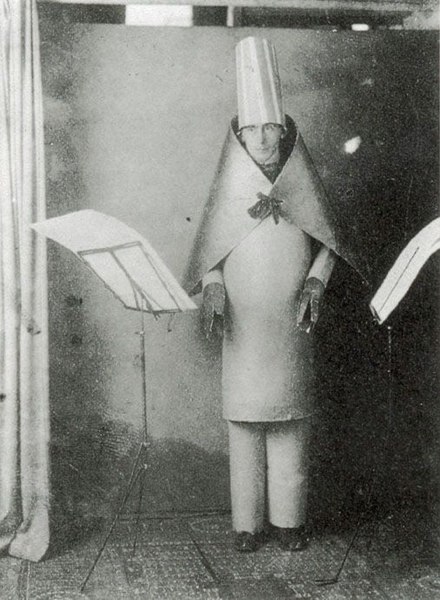
Hugo Ball (1886-1927) was a German author, poet, and one of the Dada movement’s founders. Ball was born in Germany and later relocated to Switzerland, where he got part with the Zurich Dada movement during World War I.
Ball was an important figure in the evolution of Dadaism, and he was one of the organizers of the first Dada soirées, which were public events that included poetry, music, and other forms of artistic expression.
Their performances were anarchic and illogical in nature, and they frequently challenged established concepts of art and culture.
Ball was also a writer who wrote to a number of Dada periodicals, notably “Cabaret Voltaire.” His writing frequently reflected Dada’s fascination with chance and unpredictability, and he was especially interested in investigating the power of language as a method of undermining existing concepts and systems.
Ball’s work influenced the development of the Dada movement, and his ideas regarding the use of chance and randomness in art and language are still relevant in current art and literature. He is still regarded as a pivotal figure in the history of avant-garde art and culture.
6. Max Ernst
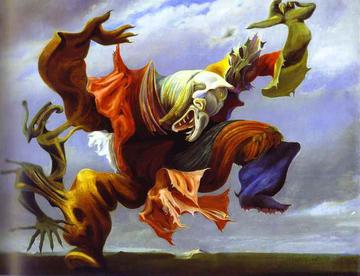
Max Ernst (1891-1976) was a German artist who was a member of the Dada and Surrealist movements. Ernst was noted for his avant-garde, often surrealistic approach to art, which questioned conventional notions of representation and meaning.
Ernst’s work included painting, sculpture, collage, and printmaking, and he frequently mixed aspects from these several mediums.
He was most known for his collage work, in which he cut and pasted various images and materials to create surprising and often unpleasant juxtapositions.
Ernst was particularly fascinated by the subconscious and irrational aspects of the human mind, and he used techniques like as automatic sketching and frottage to create works evocative of dreamy or hallucinogenic situations.
“The Garden of Earthly Delights” (1936) is one of his most renowned paintings, depicting a surreal landscape populated by weird and often scary animals.
Ernst’s effect on modern art may be seen in the work of numerous artists who came after him, notably Surrealist artists from the 1930s and 1940s and Pop artists from the 1960s and 1970s.
His influence is also alive and well in modern art and society, where there is a continuing fascination in the use of chance, unpredictability, and unusual ways to representation.
7. Man Ray
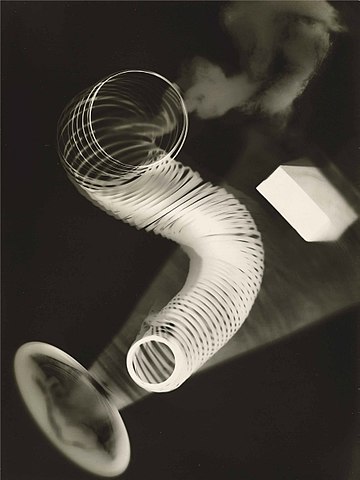
Man Ray (1890-1976) was an American painter who was involved with both the Dada and Surrealist movements. Ray was born in Philadelphia and relocated to New York City in the early 1910s, where he got active with the Dada movement.
Ray was a pioneer in the creation of experimental photography, using techniques such as photograms and solarization. He also made a number of inventive and frequently provocative sculptures, paintings, and other works of art that questioned established concepts of representation and meaning.
“Item to be Destroyed” (1923), a metronome with an image of an eye affixed to it, is one of Ray’s most famous pieces. Ray later added to the piece, “This is an object to be destroyed since it may be misconstrued for an object of art.” This remark demonstrates Dada’s interest in rejecting traditional forms of art and culture and in probing the boundaries of what can be deemed art.
Ray’s work influenced the development of both Dada and Surrealism, as well as experimental photography and other types of modern art. His influence may be found in the work of many current artists who continue to push the boundaries of art and visual expression.
8. Hannah Höch
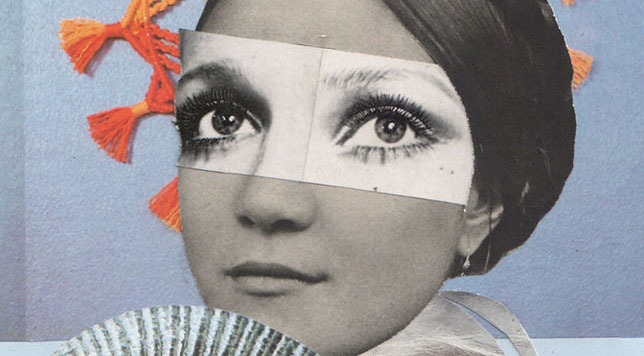
Hannah Höch (1889–1978) was a German artist best recognized for her contributions to the Dada movement. Höch was one of the few female Dadaists, and her work frequently expressed feminist and political concerns.
Höch’s work was distinguished by the use of collage, which she regarded as a means to challenge established modes of representation and investigate how pictures and ideas are produced.
Her collages frequently combined imagery from popular culture, such as commercials and periodicals, with political and social commentary.
“Cut with the Kitchen Knife Dada Through the Final Weimar Beer-Belly Cultural Period of Germany” (1919-20), a large-scale collage incorporating images of political figures, cultural icons, and common people, is one of Höch’s most famous works.
The piece is a statement on the current social and political context, as well as a celebration of art’s ability to confront and disrupt established standards.
Höch’s work influenced both Dada and feminist art, and her legacy can be found in the work of many current artists who continue to investigate how images and ideas are formed and portrayed in art and popular culture. She is still regarded as a pivotal figure in the history of avant-garde art and culture.
9. Kurt Schwitters
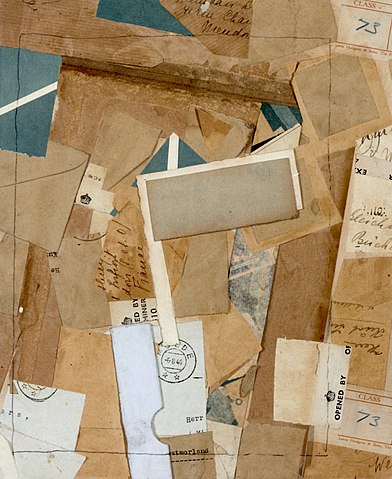
Kurt Schwitters (1887-1948) was a German artist who was a member of the Dada and Constructivist movements. Schwitters was a forerunner in the development of collage, and his work is notable for its use of unorthodox materials and discarded objects.
Schwitters’ work includes painting, sculpture, and other types of visual art, but his collages, which frequently included elements of typography, advertising, and other forms of printed matter, are perhaps best recognized.
He was fascinated by the ability of collage to generate new meanings and associations, and he frequently utilized the technique to criticize traditional forms of art and culture.
The “Merz Barn,” a large-scale installation erected in an abandoned barn in the English Lake District in the 1940s, is one of Schwitters’ most famous works.
The work used a variety of materials and objects, including scrap metal, plaster, and found artifacts, and it exemplified Schwitters’ fascination with the possibilities of the found object as a form of artistic expression.
Schwitters’ work influenced the development of Dada and Constructivism, as well as the creation of collage as a modern art genre. Many contemporary artists continue to explore the potential of found artifacts and uncommon materials in their work, as seen by his legacy. He is still regarded as a pivotal figure in the history of modern art and culture.
10. Raoul Hausmann
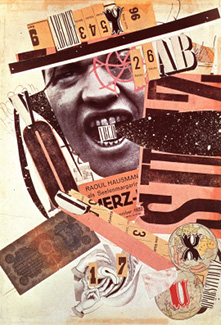
Raoul Hausmann (1886-1971) was a crucial role in the creation of the Dada movement in Austria. Hausmann was born in Vienna and relocated to Berlin in the early 1910s, when he got active with the Dada movement.
Hausmann’s work included painting, sculpture, and other types of visual art, but he is best known for his use of photomontage, a method in which he cut and pasted several photographs and images together to create new compositions. He was intrigued by photomontage’s ability to undermine traditional forms of representation and challenge established beliefs and ideals.
“The Art Critic” (1919-20), a photomontage featuring an image of a man with the head of a camera, is one of Hausmann’s most famous works. The piece is a satire on the function of the art critic in moulding public opinion, as well as the relationship between art and technology.
Hausmann’s work influenced the development of the Dada movement, and his ideas regarding the use of chance and randomness in art are still relevant in current art and society. He is still regarded as a pivotal figure in the history of avant-garde art and culture.

